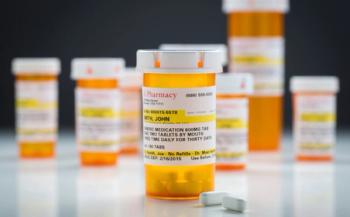
- Pharmaceutical Executive-11-01-2015
- Volume 35
- Issue 11
Strength From the Few: The NORD Summit
Rare disease supporters deliver inspiration and optimism-as well as promise of regulatory cooperation.
Rare disease advocates seem to have something to say to the industry, “Our work is important and amazing. We have made great progress, but there is so much more to do!” This, or something catchier, could easily have been the slogan for this year’s summit held by
the National Organization for Rare Disorders (NORD) in Arlington, Virginia, in October.
Amidst mounting industry rancor, a visit to the conference might be just what the doctor ordered for pharmaceutical executives who could use a reminder of the patient mission and how to achieve it through bold scientific research and cooperation. Given its inside the beltway locale, a day-trip for some politicians could also have been convenient and constructive.
Exceptional scientific breakthroughs are rife across the industry, including in many rare diseases, as this month’s pipeline report indicates. But there are four elements that were noticeably different at the NORD Summit, compared to many other pharma industry/medical conferences.
First, patient involvement is indispensable. It is clear that patient action, advocacy, and sacrifice is at the center of the success the industry has seen in rare diseases. Taking this as a cue, the conference organizers have plainly made patient participation fundamental. Their emotional and personal stories are one thing, but the real emphasis comes when the message resounds, that patients are essential for the entire drug development and treatment process. Success stems from years of sacrifice by patients and their supporters, who-though suffering through lifetimes of minimal relief-donated time, samples, genomes, etc., to build databases and natural histories. And don’t forget about those patients who suffered on placebo arms of trials.
Second, people dedicated to rare diseases exude optimism-this, in spite of their struggles and tragic accounts. There were numerous moments during the NORD event where it would have been difficult to find a dry eye in the audience. The overwhelming mentality is a sense of mission.
Third, regulators take a front and center seat in the rare disease dialogue. Surely, companies, regulators, and patients bump heads in the rare disease space, as in others. One needs to look no further than the always-contentious debate around early access and the political setting of “right to try.” The summit gives regulators a voice, and it’s clear that their participation is collaborative and constructive. The conference’s DC-adjacent venue and the presence of multiple representatives, many garbed in formal military uniforms, confer an air of civil discourse and service that is missed elsewhere. Though it should be noted, presentations by FDA officials, whose opinions are always their own and don’t represent the agency, have a way of sapping enjoyment from a room.
The optimism in rare diseases seems to spread to these regulators who see real opportunity for positive measures coming out of PDUFA VI and the 21st Century Cures Act. Acting FDA commissioner Stephen Ostroff noted that industry, stakeholders, and agency agree: patient engagement should be central in PDUFA VI negotiations. Granting companies with additional periods of exclusivity for repurposing existing drugs to rare disease indications and recycling the pediatric rare disease voucher program were quite unanimously advocated.
Also, officials were in favor of expanding patient involvement in regulatory meetings and more widely adopting a patient-focused drug development mindset, with patient experience-derived endpoints. “Patients are uniquely positioned to inform our understanding of the therapeutic context,” noted Theresa Mullin, director of FDA’s Office of Strategic Programs.
Fourth, pricing is clearly an issue that can’t be avoided, but in the confines of the rare disease space, it is surprisingly minor and certainly not a focal point of division and contention. Rare disease treatments have grabbed headlines with six-figure prices, but when the complexities of treating for real “value” arise, rare disease could be the industry’s saving grace. Clearly, many rare disease treatments are showing astounding results that are worth the price and effort.
With the political season heating up, the industry promises it will have a retort to those who seek to crush it on the profit motive and price gouging. Huge treatment prices in rare diseases are easy to point to. But maybe the industry can flip the rare disease example to its favor. It’s a complex issue, but one that NORD’s participants grasp. Hopefully, the rest of the industry is listening.
Casey McDonald is Pharm Exec's Senior Editor. He can be reached at
Articles in this issue
about 10 years ago
Pharm Exec's 2016 Pipeline Reportabout 10 years ago
The 'Prosolidate' Push: New Agency Service Mixabout 10 years ago
Pharm Exec's Pipeline Report: Twisting the Spigotabout 10 years ago
Market Access Reinventedabout 10 years ago
Drug-Pricing Backlash Reaches Fever Pitchabout 10 years ago
The Push for a Pull Supply Chainabout 10 years ago
Think Globally, Act Locallyabout 10 years ago
Precision Medicine's March to Market: 'Pairing' for Successabout 10 years ago
Drug-Pricing Backlash Reaches Fever Pitchabout 10 years ago
Country Report: TurkeyNewsletter
Lead with insight with the Pharmaceutical Executive newsletter, featuring strategic analysis, leadership trends, and market intelligence for biopharma decision-makers.




